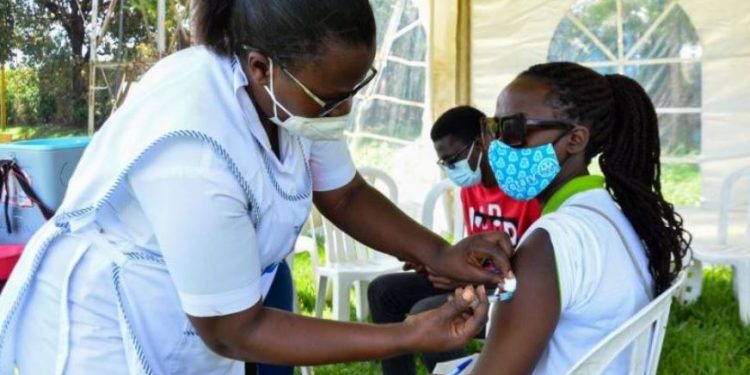Health experts are puzzled by the sharp reduction in Covid-19 infections and deaths. As of yesterday Monday, only nine patients with critical Covid-19 were admitted to the intensive care unit (ICU) of Mulago National Referral hospital.
14 others were admitted to the hospital’s high dependency unit (HDU) which would admit up to 300 patients at the same time at the height of the second wave of the pandemic mid this year.
Dr Rosemary Byanyima, the hospital deputy executive director says that they had stocked up personal protective equipment (PPE), oxygen and more space in preparation for the third wave that was feared and expected in October, but for the last two months, they have been admitting only 2-4 patients daily in their 27-bed capacity ICU.
The highest number of patients Mulago has had in the whole treatment unit since August is 35 patients according to Byanyima. Byanyima has no definite explanation for this but partly attributes it on the stringent measures at Entebbe international airport where they could be picking up the cases early on those that come in with the virus before going into the community.
She says though the admissions at Mulago may not be giving the real picture of the extent of infections since they have decided to exclusively treat those with a critical illness.
The latest prediction model by the National Planning Authority (NPA) shows the infection numbers could further go down this week. While Uganda had an average of 61 new cases per day last week, the model predicts a decline to 56 for this week that ends on November 6.
Dr Daniel Kyabayinze, an epidemiologist based at the ministry of Health says previously, they have predicted waves based on the behaviour of the virus itself and spreader events where they have observed people who go to markets as spreaders.
He says what they can’t predict is the social behaviour of the people which is the reason why they worry the country can have a rebound of infections even as the epi-curve has flattened for long.
On some days, Kyabayinze says they see abrupt spikes which they can’t exactly explain the cause. He says they base on weekly averages to determine how the pandemic is going.
Even as the numbers have remained low, Kyabayinze says they are not testing enough numbers to give them the true trends of infections since in some places adequacy of testing is still very low. He adds that the only way for Uganda to be on the safe side is by having as many people getting vaccinated.
Uganda has vaccinated less than 10 per cent of the population they initially targeted to inoculate. According to the latest figures from the Health ministry, 3,189,173 have so far been administered whereby the majority have only got their first dose. The country plans to vaccinate about 21 million people.
Overall, since the pandemic hit in March 2020, the country has recorded a total of 126,236 cases of which 3,215 died. URN











